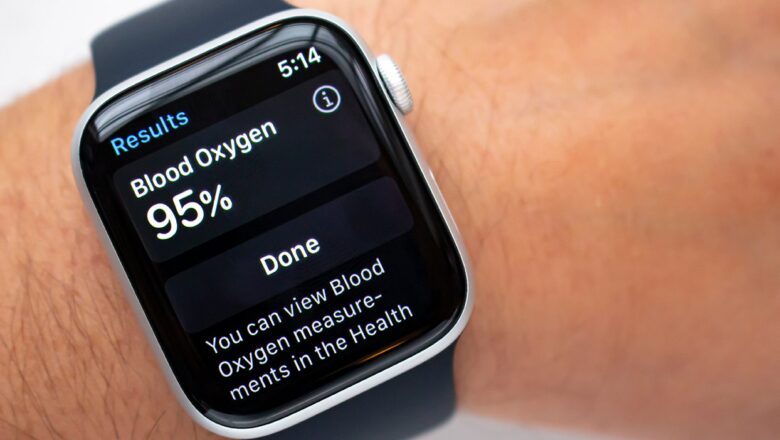Employee safety is a top priority for organizations across the world. With the advancements in technology, employers have access to a wide range of tools and techniques to ensure their employees are safe at work. In recent years, technology has revolutionized employee safety training and prevention, making it more effective, convenient, and efficient than ever before. This blog post will explore the different ways technology is being used to improve employee safety training and prevention.
1. E-Learning Platforms: Convenient and Efficient Training for All

E-Learning platforms provide employees with access to training materials online, making it easy for them to learn at their own pace and on their own schedule. They are particularly useful for organizations with employees in different locations or with different schedules. To access training and compliance software, check here.
These platforms can provide a wide range of training materials, including videos, interactive courses, quizzes, and other resources. These materials can be customized to suit the needs of different industries and can be accessed from any device with an internet connection.
E-Learning platforms can also be used to track employee progress and provide feedback on their performance. This information can be used to identify areas where employees need additional training and to improve the overall effectiveness of the training program.
2. Virtual Reality (VR) Training: Immersive Learning for Hazardous Situations
VR training provides employees with the opportunity to experience different scenarios and learn how to respond in a safe and effective manner. This technology can be used to simulate dangerous situations such as fire, gas leaks, and natural disasters. Employees can learn how to evacuate a building, operate fire extinguishers, and other emergency procedures in a controlled environment.
It can also be used to improve workplace safety by simulating dangerous working conditions, such as working at heights, in confined spaces, or working with hazardous materials. VR training can be customized to suit the needs of different industries, and the training can be repeated as many times as necessary to ensure employees are fully prepared for real-life scenarios.
3. Augmented Reality (AR) Training: Enhancing Real-Life Situations

Augmented Reality (AR) is another technology that is transforming employee safety training. AR technology overlays digital information onto real-world objects, enhancing the user’s experience and providing additional information. AR training can be used to provide employees with real-time information on safety procedures, equipment operation, and other critical information.
AR technology can be used to improve workplace safety by providing employees with real-time information on hazardous situations. For example, an AR device could overlay information on a machine that warns employees of potential hazards, such as moving parts or high temperatures. This type of information can help employees avoid accidents and injuries, making the workplace safer.
It can also be used to enhance the training experience for employees. By overlaying digital information onto real-world objects, employees can learn how to operate machinery, use equipment, and perform other tasks more effectively. AR technology can provide step-by-step instructions, video tutorials, and other resources that help employees learn new skills and improve their performance.
4. Interactive Simulations: Replicating Real-World Scenarios for Practice
Interactive simulations use computer software to create a virtual environment that replicates real-world scenarios. This technology allows employees to practice their skills in a safe and controlled environment.
They can be used to simulate a wide range of scenarios, including hazardous situations such as chemical spills, workplace accidents, and emergency evacuations. These simulations allow employees to practice their responses to different scenarios and identify areas where they need additional training.
These simulations can be customized to suit the needs of different industries and can be repeated as many times as necessary to ensure employees are fully prepared. This type of training can be particularly effective for employees who work in high-risk environments, such as emergency services or manufacturing.
5. Wearable Devices: Monitoring Employee Health and Safety

Wearable devices are another technology that is being used to improve employee safety. Devices such as smartwatches, fitness trackers, and other health monitoring devices can be used to track employee health and safety. These devices can monitor vital signs, such as heart rate and blood pressure, and provide alerts if there are any changes that could indicate a health problem or safety issue.
They can also be used to monitor employee activity and ensure they are following safety protocols. For example, a wearable device could be used to monitor the movement of a worker in a dangerous environment and provide alerts if they move into a restricted area or approach a hazard.
6. Safety Apps: Providing Quick Access to Safety Information and Training
Safety apps are another technology that is changing the way employee safety training is conducted. They provide quick and easy access to safety information and training materials. These apps can be accessed from any device with an internet connection and can provide employees with real-time information on safety procedures, equipment operation, and other critical information.
Apps can be customized to suit the needs of different industries and can provide a wide range of training materials, including videos, interactive courses, quizzes, and other resources. These apps can also be used to track employee progress and provide feedback on their performance.
7. Big Data Analytics: Identifying Trends and Improving Safety Protocols

Big data analytics involves the collection, analysis, and interpretation of large sets of data. This technology can be used to identify trends and patterns in workplace accidents and injuries, allowing organizations to improve their safety protocols and prevent future incidents.
Analytics can be used to identify areas where employees are most at risk and to develop targeted training programs to address these risks. This technology can also be used to monitor the effectiveness of safety programs and identify areas where improvements can be made.
8. Collaborative Tools: Sharing Information and Best Practices Across Teams
Collaborative tools, such as online forums and social media platforms, allow employees to share information and best practices across teams. This technology can be used to improve communication between employees and to share knowledge and expertise.
These tools can also be used to create a culture of safety within an organization. By encouraging employees to share information and best practices, organizations can create a more collaborative and supportive environment, where employees feel empowered to speak up about safety concerns.
Conclusion: The Future of Employee Safety Training in a Technological Age
Technology has revolutionized the way employee safety is handled in the workplace by providing employers with smarter tools to manage their training and prevention efforts. Through advanced technologies like virtual reality simulations, artificial intelligence-driven analytics, and automated compliance solutions, companies are able to better understand their employees’ needs and create targeted solutions that help keep them safe at work. Using technology for employee safety training and prevention can make a real difference in protecting workers from injury or worse – something every employer should consider when creating their own policies.

